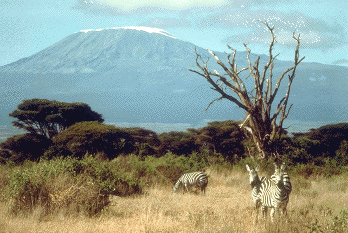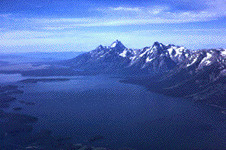

I hate "blinking text" but it did catch your attention. I am interested in finding out more about you and your backgrounds. Therefore, if you will complete the following Survey after November 14, 2001 but before the last day of class you will earn 10 points.

"The process by which the Lithospheric plates, which are "floating" on the Mantle, adjust vertically to achieve an equilibrium (the crust and upper mantle have a uniform density.) Because Oceanic Crust has a higher density than Continental Crust, it adjusts lower into the Mantle. This condition is augmented by the fact that Oceanic Crust is thinner and therefore has less mass to compensate for through buoyant displacement of the Mantle."
"..... Stratovolcano or composite cone - a volcano that consists of intermixed layers of lava flows and poorly consolidated volcanic material such as ash and cinders. Stratovolcanos are typically located on continental crust above subducting plates and are easily recognized by their often beautiful symmetrically-shaped cones....."
 Grand Teton National Park is the destination of more than 3 million vistors a year who are searching for a
vacation spot that provides scenic splendor, a varied ecosystem with abundant wildlife, and excellent
recreational opportunities. The Teton Range is the focal point of the park, rising more than 7,000 feet above
the floor of Jackson's Hole which borders the mountains on the east.
Grand Teton National Park is the destination of more than 3 million vistors a year who are searching for a
vacation spot that provides scenic splendor, a varied ecosystem with abundant wildlife, and excellent
recreational opportunities. The Teton Range is the focal point of the park, rising more than 7,000 feet above
the floor of Jackson's Hole which borders the mountains on the east.
| jbutler@uh.edu
|E-mail the ClassListserv|Read the ClassListserv|
Copyright by John C. Butler, July 29, 1995
|Textbook Home Page
|Glossary of Geologic Terms|Search These Pages|
|Other Courses|Resources|Grade Book|